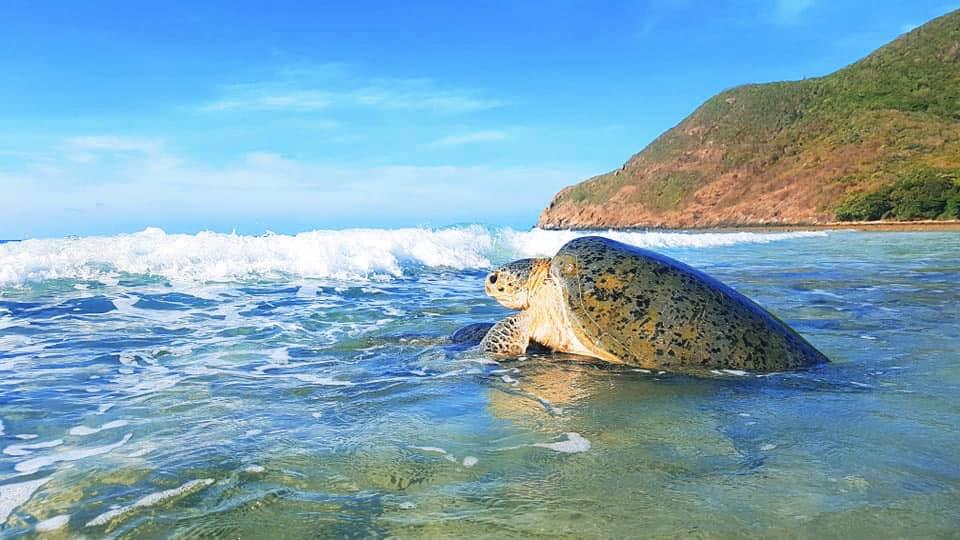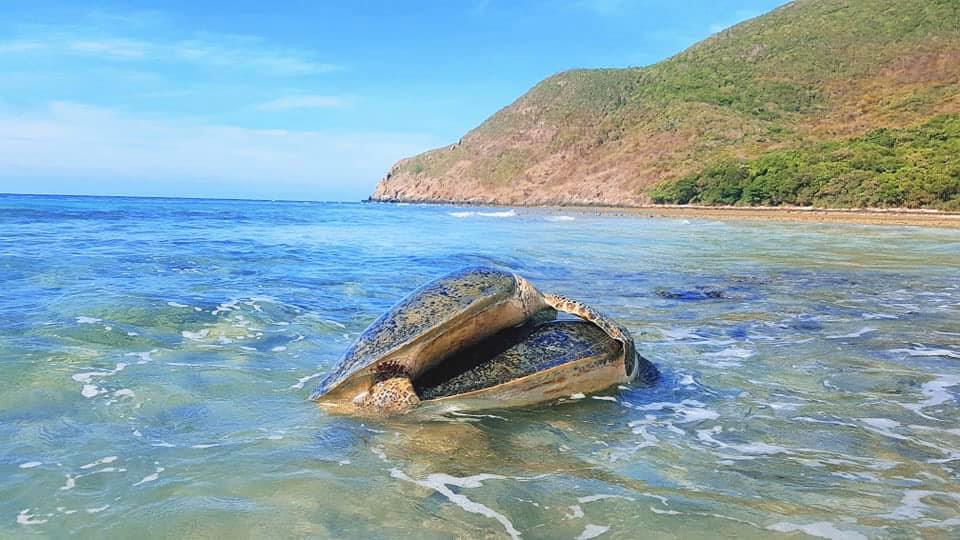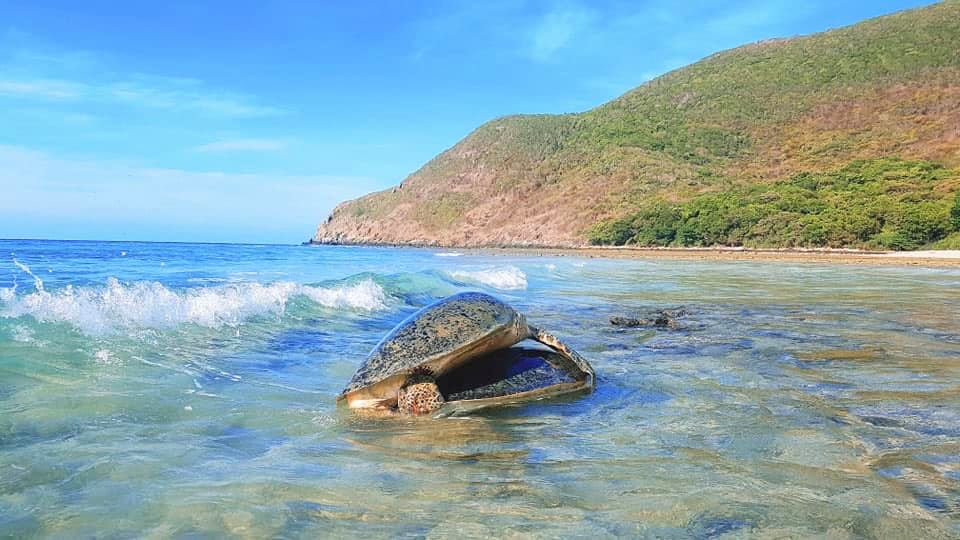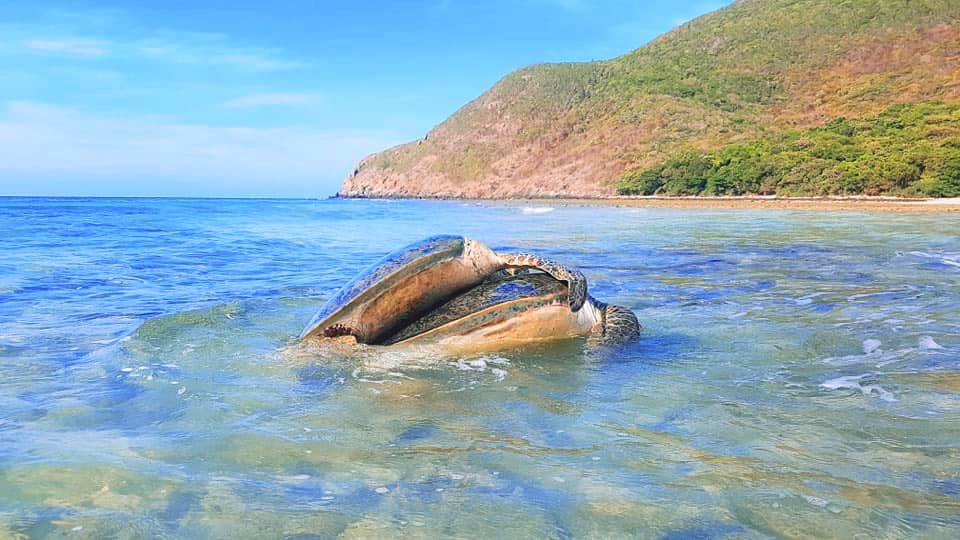Rare sighting of two green sea turtles mating very close to shore at Cat Lon Beach, Bay Canh Islet. After a long night patroling the beach and overseeing turtles nesting, one of our ranger spotted these two green sea turtle (Chelonia mydas) during their mating on the surface near Cat Lon Beach. Sea turtles mating on the surface are considered rare according to our rangers with many years of experience, since these sightings ae ofter found under water and quite far from the shores.
Sea turtle mating is a rare and amazing sight to observe in the wild. Most sea turtles species are solitary creatures and only come together during mating season. Mating can actually be a dangerous activity for sea turtles! The male holds onto the female and she has to support the weight of both of them whilst at the same time regularly surface for air.

Both male and females’ reproductive organs are located at the base of their tails in their cloaca – a combined intestinal, urinary, and reproductive organ. Males have a very long tail while females have a short tail. The male’s penis is located in his cloaca. He reaches his tail underneath the posterior end of the female’s shell to inseminate her cloaca.
Mating can take several hours. Afterwards, the male will try to hang on to his partner’s shell to prevent other males from mating with her. Several males may compete for one female at the same time, aggressively biting his tail and flippers to get him to let go of her.
Mating is not easy for a female sea turtle. She must support both her own and the male’s weight and regularly swim to the surface for them to breathe. This is even more difficult when several males compete for her and she may be at risk of being drowned.
After the male and female separate, they mate again with other sea turtles. A female will mate with several males and store the sperm for several months until she is able to fertilize all of her eggs and start nesting.
Despite their laid-back, loveable image, sea turtles are sexually aggressive. Females observed on nesting beaches often have deeply scratched shells and bleeding wounds. These are caused by the hooks on the male’s front flippers which anchor onto their shells during mating. Mating can actually be a dangerous activity for sea turtles! The male holds onto the female and she has to support the weight of both of them whilst at the same time regularly surface for air.
Mating takes place either on the surface or under water, with several males often competing for the females who are outnumbered two to one. Female sea turtles will mate with several males before they head for the nesting beaches, storing the sperm so that when they finally nest, the eggs will have been fertilised by more than one male. Mating is not easy for a female sea turtle. She must support both her own and the male’s weight and regularly swim to the surface for them to breathe. This is even more difficult when several males compete for her and she may be at risk of being drowned.
April to July is the mating season in the northern hemisphere and each season, where the turtles exist close to heavily populated areas, there are reports of male sea turtles either aggressively approaching or in some cases, trying to mount, divers. One report from 1989 tells of a turtle mounting a male scuba diver and “made good its mating attack on this luckless individual” (Epstein 1989) whilst attempting to pin the victim to the bottom.
A bit of an aquatic dance initiates turtle mating behaviour. Males nip and bump and eventually mount the female. The male turtle hangs on to the front edge of the female’s shell with his retro-curved claws. The male’s tail has another “claw” at the end and this allows for a sturdy three-point attachment. He needs as good grip; turtle mating is tantric in the extreme and can take hours and hours, which may account for the stupid belief that turtle eggs are aphrodisiacs!
Source: Save Con Dao




